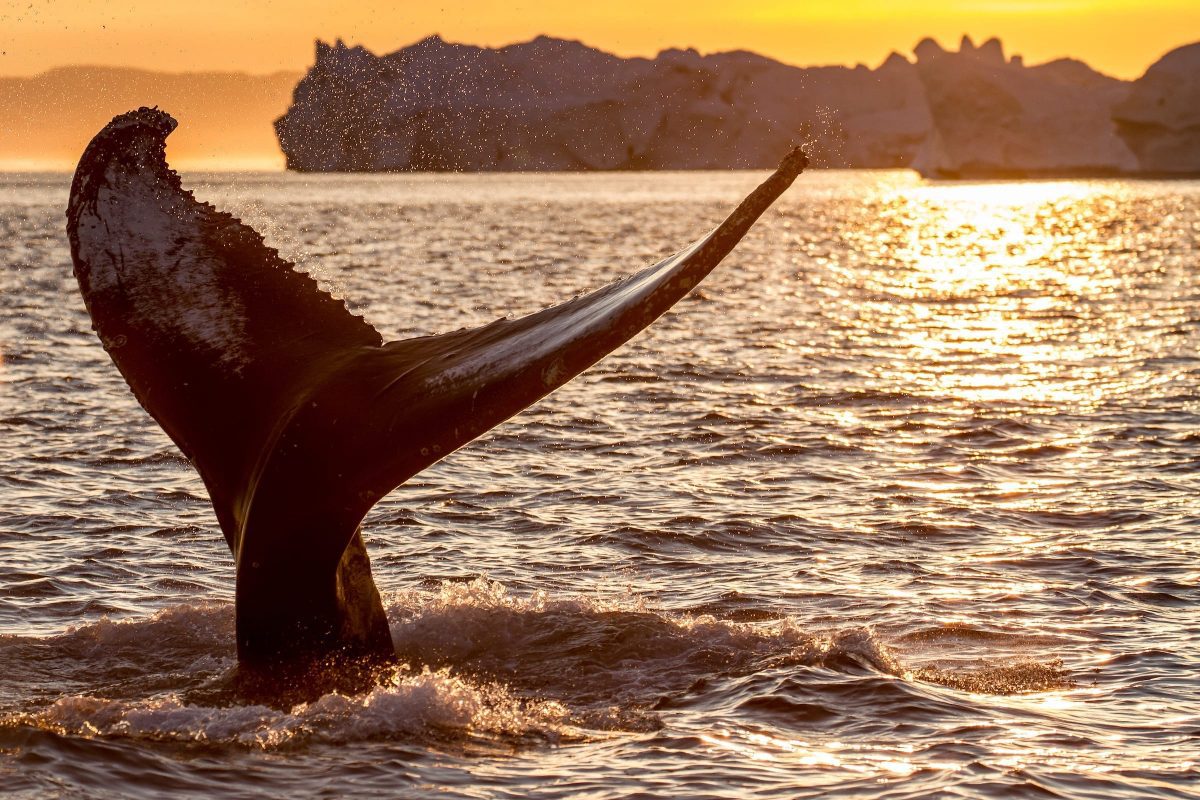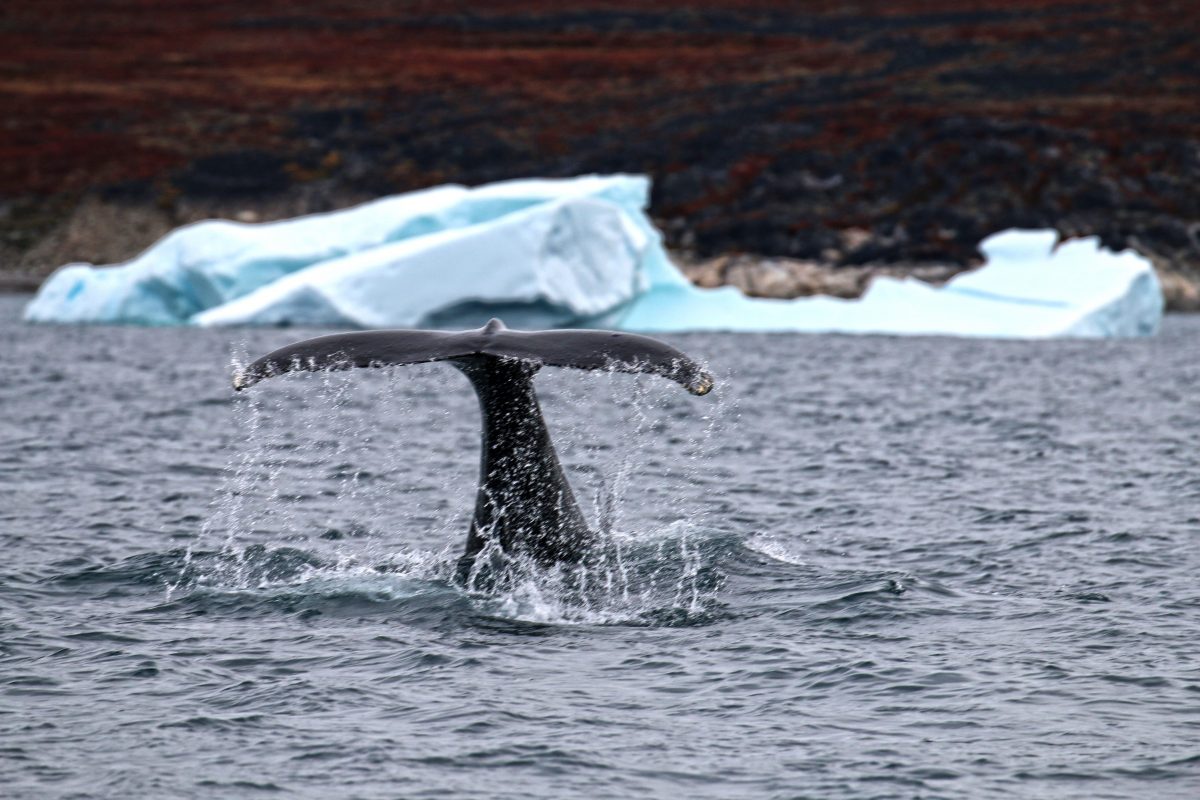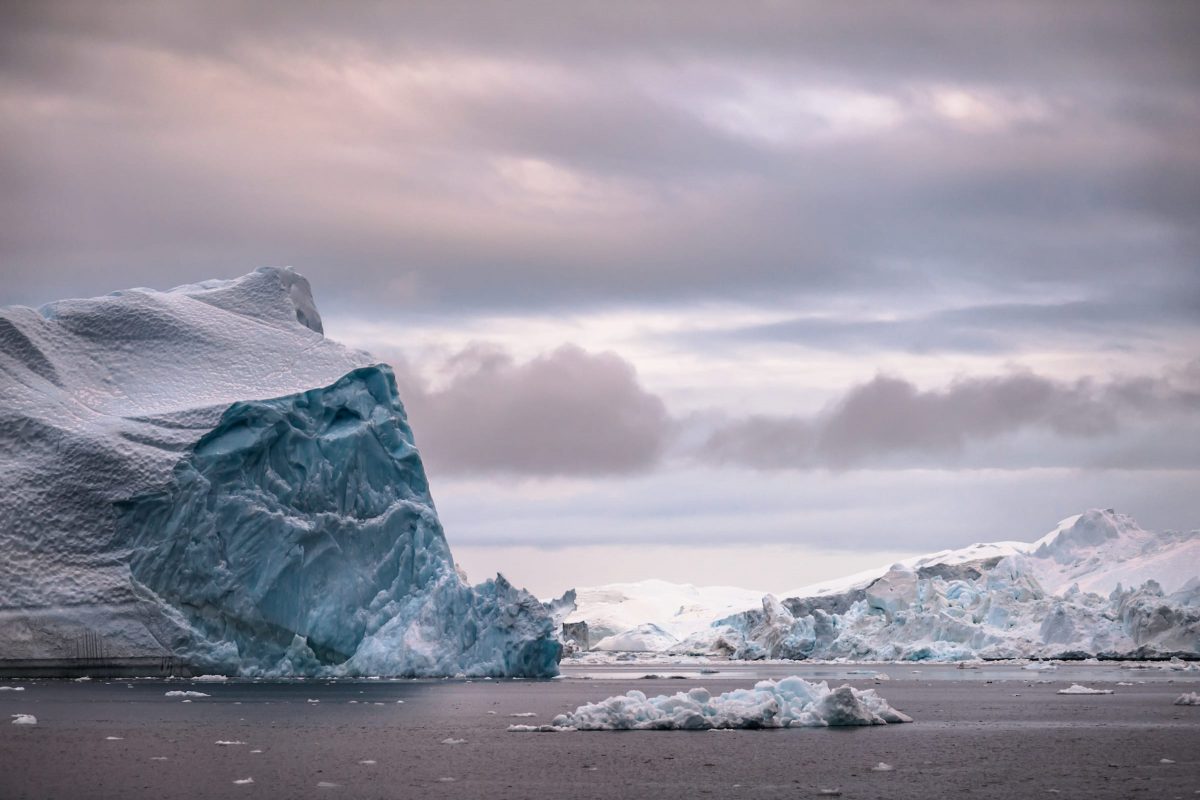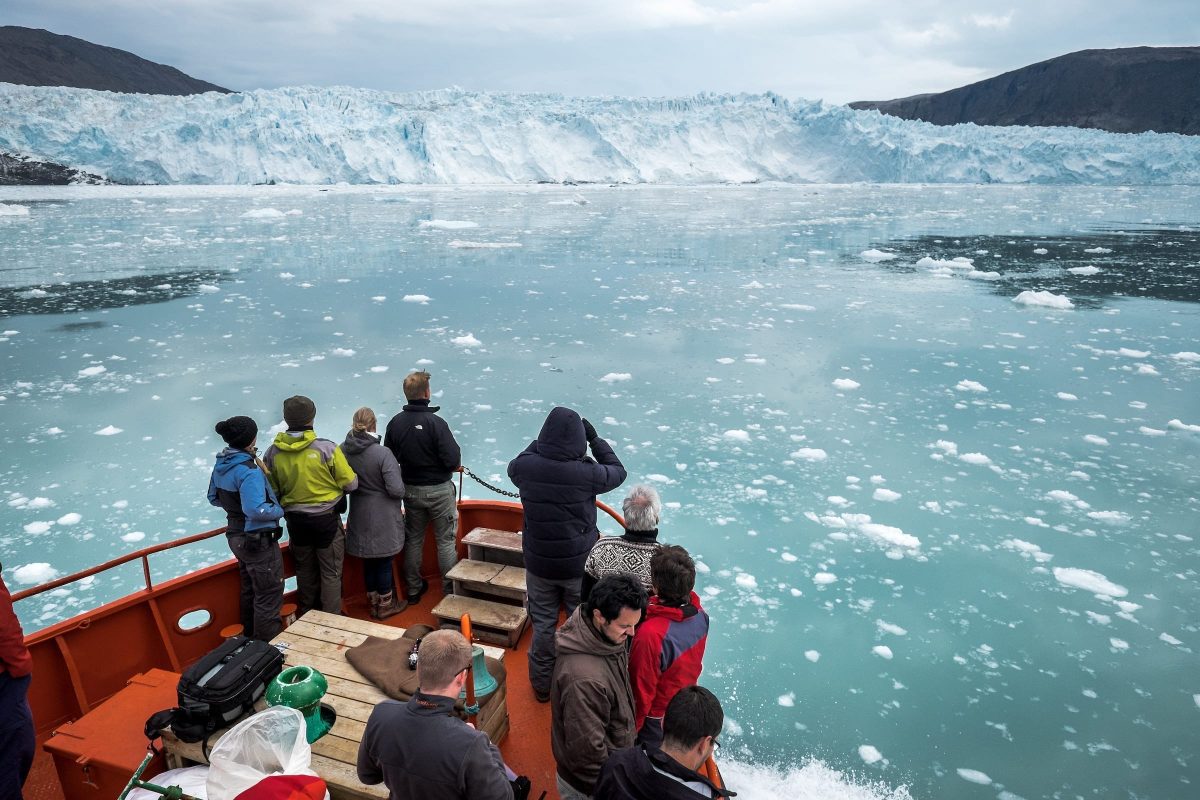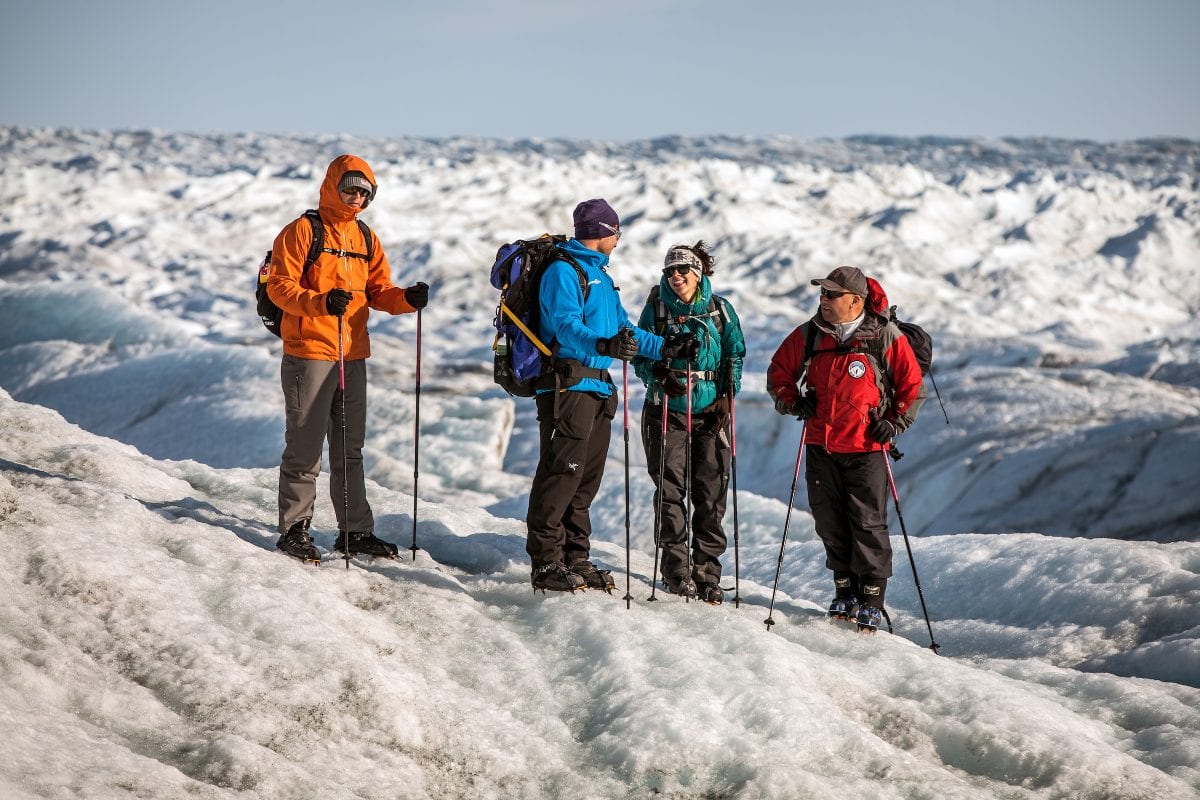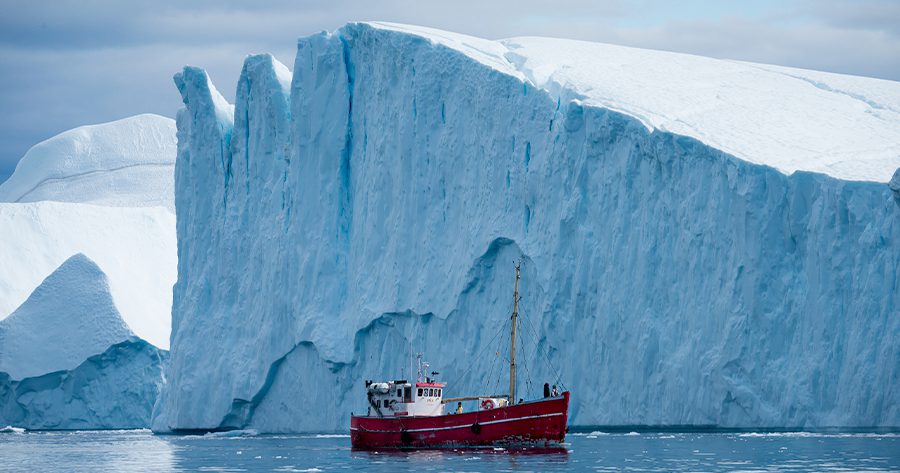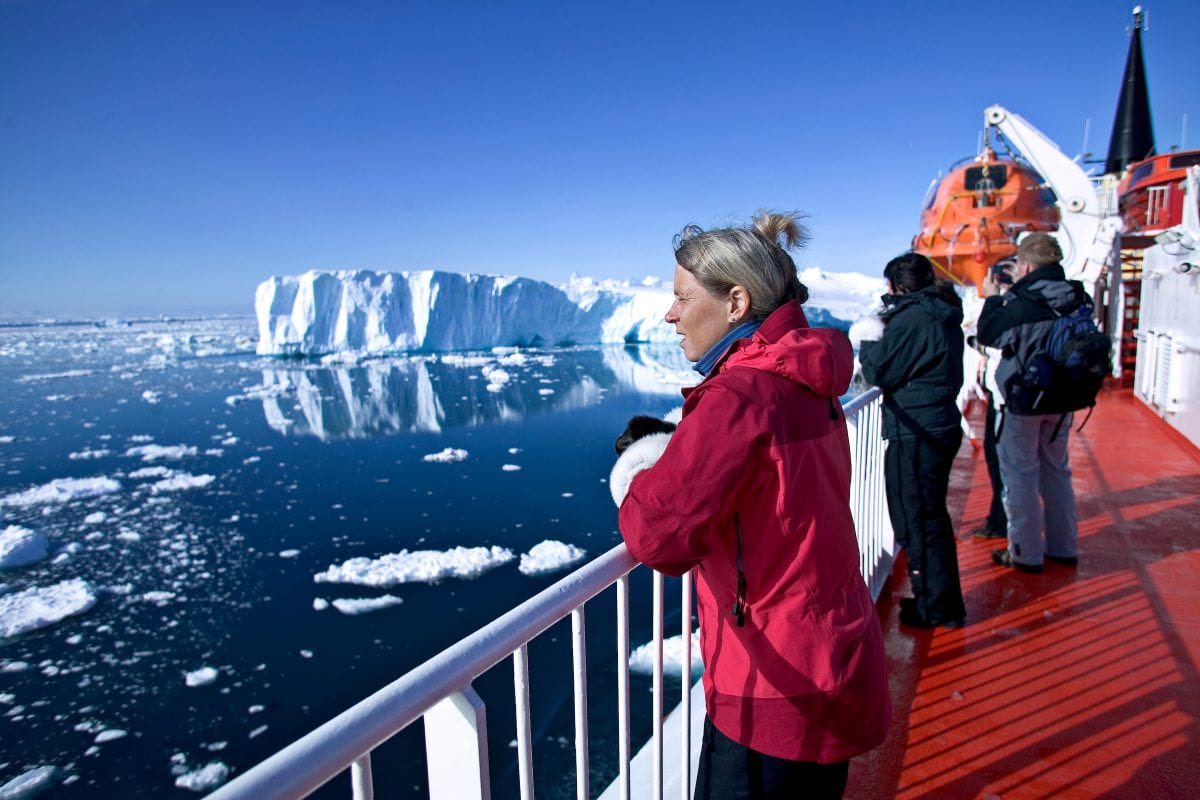The surrounding area
Qeqertarsuaq is surrounded by beautiful basalt mountains that differ from many other Greenlandic areas. The red glow of the mountains is beautiful and especially when seen in contrast to the great lushness of the island in the summer. There are hot springs on the island, which means you find over half of Greenland’s 500 plant species here in the good soil.
The island is made for hiking, where you walk among the most amazing rock formations. You find rocks that resemble elephants and camels. Nearby is the Kuannit area, a lush area with lots of angelicas, a plant that everyone in Greenland loves. On the way there, you cross the Red River.
On the island, you find volcanic rocks, and therefore we know that Qeqertarsuaq came from volcanic activity, just as Iceland did. The rest of Greenland, the mainland, consists of bedrock, so geologically Qeqertarsuaq differs greatly from the rest of Greenland. The basalt columns were formed many millennia ago when volcanic lava sprouted from the underground and subsequently cooled and solidified. The rapid cooling has caused the lava to contract and form incredible formations and basalt columns with hexagonal structures.
The old legends
Legend has it that, in South Greenland, two hunters in search of seals got tired of the island being in their way, so they pulled it up to North Greenland. They simply dragged the island behind their kayaks with the help of a single and, obviously, really strong strand of hair from an infant! Seeing the island approaching, a witch in Ilulissat cast a spell on the island, so it hit the ground before reaching Ilulissat. And that is why Disco Island is where it is today.
Fun fact: It is named Disco Island because of its round shape, and not because this is where the popular Vaigat dance music from Greenland originates.
